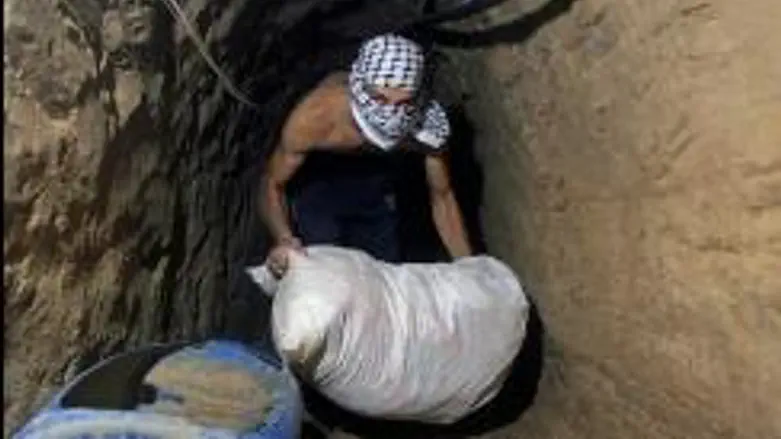
The Iranian-Hizbullah-Hamas axis is connected via a common use of deep underground tunnels - which, in Iran, hide Tehran’s nuclear facilities where enriched uranium can be used to manufacture a nuclear weapon.
Iran recently admitted that it has been building a previously unknown reactor in the area of Qum, a confession that was made only after foreign intelligence experts reported on the new facility. The discovery that the plant is located inside a mountain duplicates Iran’s use of a network of tunnels to hide other parts of its growing nuclear infrastructure, according to The New York Times.
The American policy of threatening sanctions and leaving open the diplomatic option has given Iran enough time to build the tunnel system, leaving behind the near-impossibility for the Western world, including Israel, to know the exact location of the nuclear plants and then be able to bomb them through underground rock and thick man-made concrete.
Defense Minister Ehud Barak last month implied that the Western world has put itself in a tight corner. He told the Knesset Foreign Affairs and Security Committee that the Qum plant is “located in bunkers that cannot be destroyed through a conventional attack.”
One possible offensive weapon for the Western world is a tunnel-busting bomb, which still is in the development stage in the United States as the race against the nuclear clock counts down to zero. The American government has ordered a speed-up for delivery of the huge bomb, which contains more than two tons of explosives and weighs around 15 tons.
Iran’s of using a complex web of tunnels goes back more than a decade and may be the source for the construction of a similar network by Hizbullah in southern Lebanon and by Hamas under the border between Egypt and Gaza.
 Underground bunkers and tunnels gave Hizbullah a decisive edge over the IDF in the Second Lebanon War, when soldiers were surprised to discover that bushes in southern Lebanon began to move. The vegetation was a camouflage that stood over the entrances to huge tunnels, which hid rocket launchers, missiles and full-fledged communications headquarters and escape routes.
Underground bunkers and tunnels gave Hizbullah a decisive edge over the IDF in the Second Lebanon War, when soldiers were surprised to discover that bushes in southern Lebanon began to move. The vegetation was a camouflage that stood over the entrances to huge tunnels, which hid rocket launchers, missiles and full-fledged communications headquarters and escape routes.
Underground tunnels may have been used by Hizbullah in the kidnapping of soldiers Ehud Goldwasser and Eldad Regev while the Israeli Air Force conducted aerial bombings in an effort to cut off above-ground escape routes.
The tunnel system was built since 2000, when Defense Minister Ehud Barak, who then was Prime Minister, ordered a sudden withdrawal of the IDF from the security zone in southern Lebanon, leaving Israel without an intelligence system to report on the terrorist organization’s massive preparations for war.
In southern Israel, the Fatah-led Palestinian Authority and the Hamas terrorist faction which succeeded it in elections nearly three years ago, have used hundreds of tunnels to smuggle into Gaza hundreds of tons of explosives as well as advanced anti-aircraft and anti-tank missiles, many of them made in Iran.
The technical knowledge and advances for building tunnels was advanced by Iranian President Mahmoud Ahmadinejad, who is a former transportation engineer and who has been personally involved in developing the tunneling industry in Iran. He has brought into the country huge machines that can quickly dig through hard rock, some times for civilian purposes, such as subways, and often for military purposes, such as nuclear reactors.
Some of the tunnels also may be bogus, a tactic to confuse would-be attacks on the nuclear reactors.